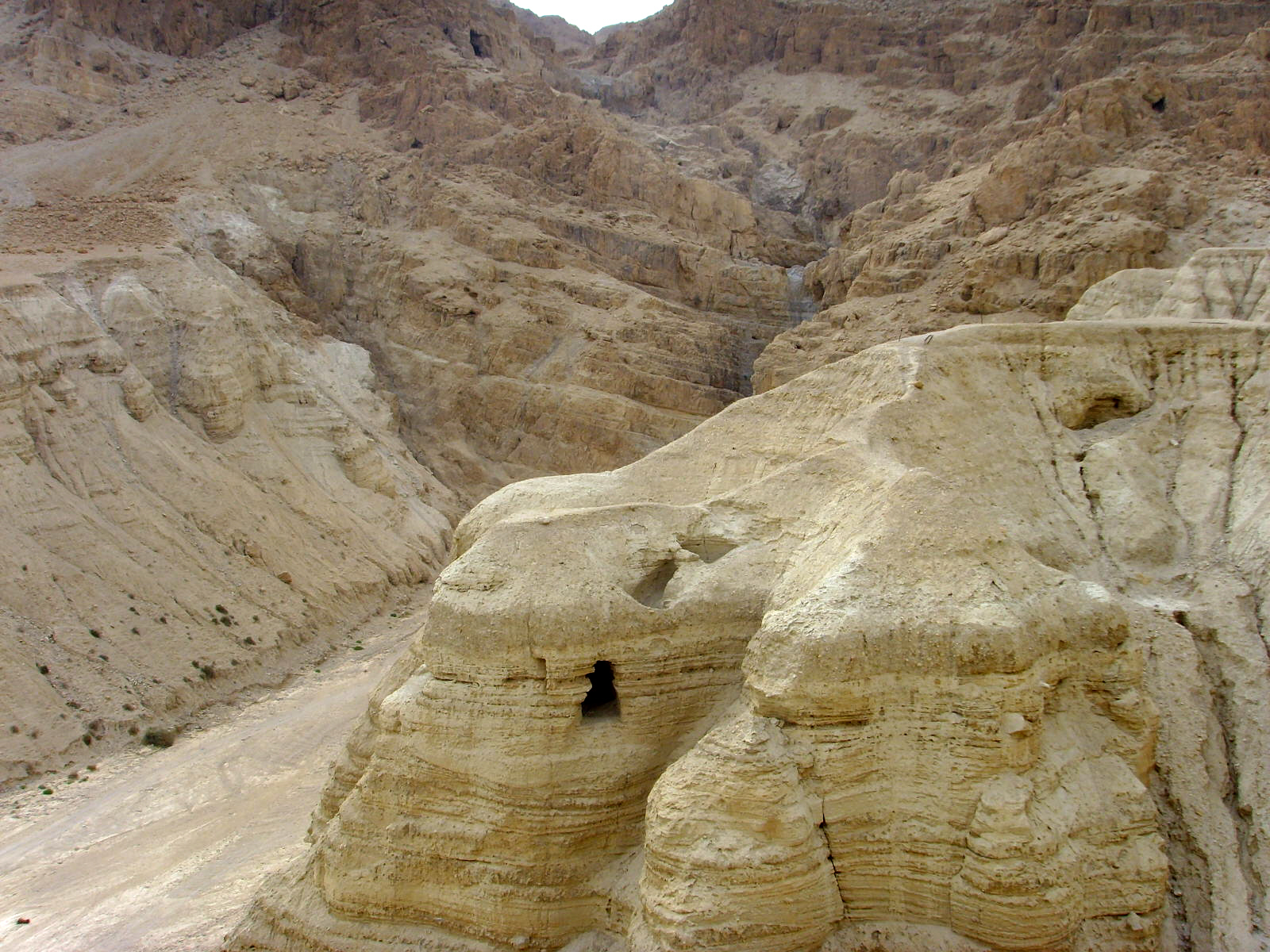List Of Manuscripts From Qumran Cave 4 on:
[Wikipedia]
[Google]
[Amazon]
The following is a list of the Dead Sea Scrolls from the cave 4 near
 Wadi Qumran Cave 4 was discovered in August 1952, and was excavated from 22–29 September 1952 by Gerald Lankester Harding,
Wadi Qumran Cave 4 was discovered in August 1952, and was excavated from 22–29 September 1952 by Gerald Lankester Harding,
File:Dead Sea Scroll, Pesher Isaiah, from Qumran Cave 4. The Jordan Museum, Amman.jpg, Dead Sea Scroll, Pesher Isaiah, from Qumran Cave 4. The Jordan Museum, Amman
File:Dead Sea Scroll 109, Qohelet or Ecclesiastes, from Qumran Cave 4. The Jordan Museum, Amman.jpg, Dead Sea Scroll 109, Qohelet or Ecclesiastes, from Qumran Cave 4. The Jordan Museum, Amman
File:Dead Sea Scroll 175, Testimonia, from Qumran Cave 4. The Jordan Museum, Amman.jpg, Dead Sea Scroll 175, Testimonia, from Qumran Cave 4. The Jordan Museum, Amman
A Catalog of Biblical Passages in the Dead Sea Scrolls
by David Washburn, 2002
Textual Criticism: Recovering the Text of the Hebrew Bible
by Peter Kyle McCarter, 1986 {{Dead Sea Scrolls 1952 archaeological discoveries Dead Sea Scrolls Qumran Cave 4
Qumran
Qumran ( he, קומראן; ar, خربة قمران ') is an archaeological site in the West Bank managed by Israel's Qumran National Park. It is located on a dry marl plateau about from the northwestern shore of the Dead Sea, near the Israeli ...
.
Description
 Wadi Qumran Cave 4 was discovered in August 1952, and was excavated from 22–29 September 1952 by Gerald Lankester Harding,
Wadi Qumran Cave 4 was discovered in August 1952, and was excavated from 22–29 September 1952 by Gerald Lankester Harding, Roland de Vaux
Roland Guérin de Vaux (17 December 1903 – 10 September 1971) was a French Dominican priest who led the Catholic team that initially worked on the Dead Sea Scrolls. He was the director of the Ecole Biblique, a French Catholic Theological S ...
, and Józef Milik.VanderKam, James C., ''The Dead Sea Scrolls Today'', Grand Rapids: Eerdmans, 1994. pp. 10–11. Cave 4 is actually two hand-cut caves (4a and 4b), but since the fragments were mixed, they are labeled as 4Q. Cave 4 is the most famous of Qumran caves
Qumran Caves are a series of caves, both natural and artificial, found around the archaeological site of Qumran in the Judaean Desert. It is in these caves that the Dead Sea Scrolls were discovered.
Israel Nature and Parks Authority took over t ...
both because of its visibility from the Qumran plateau and its productivity. It is visible from the plateau to the south of the Qumran settlement. It is by far the most productive of all Qumran caves, producing ninety percent of the Dead Sea Scrolls
The Dead Sea Scrolls (also the Qumran Caves Scrolls) are ancient Jewish and Hebrew religious manuscripts discovered between 1946 and 1956 at the Qumran Caves in what was then Mandatory Palestine, near Ein Feshkha in the West Bank, on the ...
and scroll fragments (approx. 15,000 fragments from 500 different texts), including 9–10 copies of Jubilees
The Book of Jubilees, sometimes called Lesser Genesis (Leptogenesis), is an ancient Jewish religious work of 50 chapters (1,341 verses), considered canonical by the Ethiopian Orthodox Church as well as Beta Israel (Ethiopian Jews), where it is ...
, along with 21 ''tefillin
Tefillin (; Modern Hebrew language, Israeli Hebrew: / ; Ashkenazim, Ashkenazic pronunciation: ), or phylacteries, are a set of small black leather boxes with leather straps containing scrolls of parchment inscribed with verses from the Torah. Te ...
'' and 7 ''mezuzot
A ''mezuzah'' ( he, מְזוּזָה "doorpost"; plural: ''mezuzot'') is a piece of parchment, known as a ''klaf'', contained in a decorative case and inscribed with specific Hebrew verses from the Torah ( and ). These verses consist of the J ...
''.
List of manuscripts
Some resources for more complete information on the scrolls are the book byEmanuel Tov
Emanuel Tov, ( he, עמנואל טוב; born September 15, 1941, Amsterdam, Netherlands as Menno Toff) is a Dutch Israeli, emeritus J. L. Magnes Professor of Bible Studies in the Department of Bible at the Hebrew University of Jerusalem. He ...
, "Revised Lists of the Texts from the Judaean Desert" for a complete list of all of the Dead Sea Scroll texts, as well as the online webpages for the Shrine of the Book
The Shrine of the Book ( he, היכל הספר, ''Heikhal HaSefer'') is a wing of the Israel Museum in the Givat Ram neighborhood of Jerusalem that houses the Dead Sea Scrolls and the Aleppo Codex, among others.
History
The building was construc ...
and the Leon Levy Collection, both of which present photographs and images of the scrolls and fragments themselves for closer study. Information is not always comprehensive, as content for many scrolls has not yet been fully published.
4Q1–4Q100
4Q101–4Q200
4Q201–4Q300
4Q301–
Gallery
See also
*Biblical manuscripts
A biblical manuscript is any handwritten copy of a portion of the text of the Bible. Biblical manuscripts vary in size from tiny scrolls containing individual verses of the Jewish scriptures (see ''Tefillin'') to huge polyglot codices (multi-ling ...
* Septuagint manuscripts
The Septuagint (LXX), the ancient (first centuries BC) Alexandrian translation of Jewish scriptures into Koine Greek exists in various manuscript versions.
List of Septuagint manuscripts
There are currently over 2000 classified manuscripts ...
* List of Hebrew Bible manuscripts
A Hebrew Bible manuscript is a handwritten copy of a portion of the text of the Hebrew Bible (Tanakh) made on papyrus, parchment, or paper, and written in the Hebrew language. (Some of the Biblical text and notations may be in Aramaic.) The oldes ...
Notes
References
Bibliography
*External links
A Catalog of Biblical Passages in the Dead Sea Scrolls
by David Washburn, 2002
Textual Criticism: Recovering the Text of the Hebrew Bible
by Peter Kyle McCarter, 1986 {{Dead Sea Scrolls 1952 archaeological discoveries Dead Sea Scrolls Qumran Cave 4